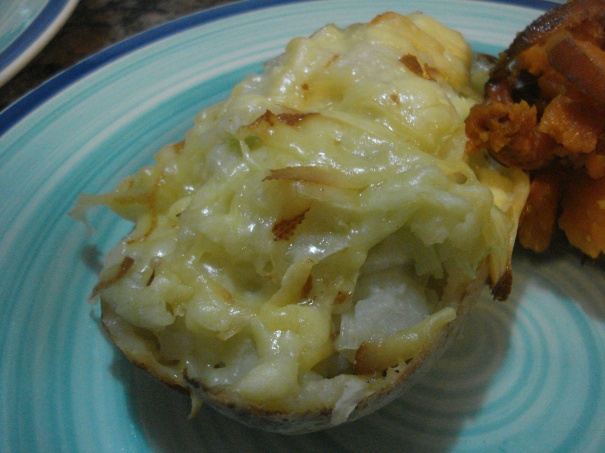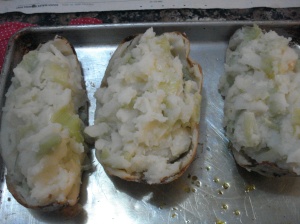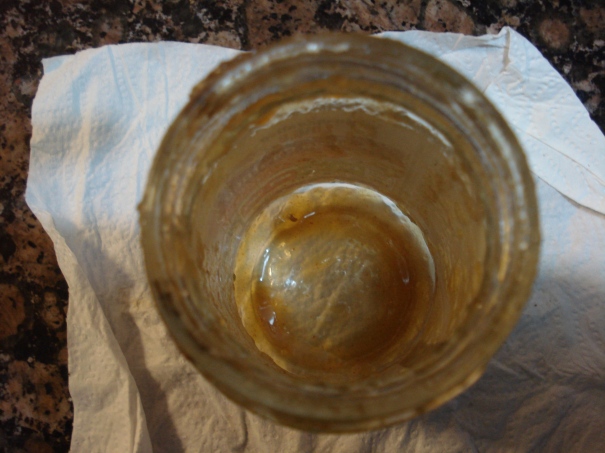Are you planning to ‘spring clean’ your kitchen cupboards? Now is a good time to do so, with many of us having extra time on our hands since we’re staying home because of the corona virus. So yes, get in there and empty EVERYTHING out so you can scrub all the surfaces in your cupboards and maybe even replace tired shelf liners. And dispose of all those foodstuffs that have been forgotten about for ages–WAIT a minute!
Just because something has been in the cupboard for a long time doesn’t mean it is no longer good. Think carefully about each item before you decide its fate. Examine the packaging first. If the outer packaging is damaged, set it aside to deal with when you’ve finished cleaning (see end of post). If it’s not damaged, read the label. Maybe it has a date on the package, but what does the date mean?![IMG_4015[1]](https://creativeeconomyinthekitchen.files.wordpress.com/2020/03/img_40151.jpg?w=605)
We live in an era that is driven by profit on the one hand and terror of lawsuits on the other. Sellers want to maximize their takings (more on this later), and nobody wants to get sick from their food, or make anyone else sick. Date marking food products is partly a result of these factors. Consumers can be fooled into thinking if a date on a package is past, the food inside is unsafe, but that isn’t always the case. Does the date refer to the retailer’s sell-by date? Or a ‘use by’ date? Or when the food was produced/packaged? Or is it a ‘best before’ date? What’s the difference? Use the information to help you make decisions, but don’t let every stamped date make decisions for you.
Some of the dates on packaging are there simply as identifiers (production or packaging dates). These are important for producers and retailers, to know which items to sell first, and they can be useful to consumers for deciding which item to use first, but are the least important to worry about in terms of nutritional value and food safety. If you see a date on your package that has an indecipherable code with it, that is probably a production/packaging date. Use your oldest things first.
Food that doesn’t store very well (generally perishable, raw foods) may have a retailer’s sell-by date or a consumer’s use-by date. These foods usually require refrigeration, so shouldn’t be hiding in the back of your cupboard. Be sure to follow storage instructions on any foods like this! Look for sell-by dates before purchase. After that, look for other date stamps. If you have a date label that clearly says ‘use-by‘, that means the item may begin to perish by then, certainly if it hasn’t been kept in ideal conditions. These will usually be on prepared foods, like deli salads. The idea is that this food item might not be safe to eat after this date. But it might still be ok, particularly if it hasn’t been unsealed. Use your common sense, as well as your five physical senses, and if you have any doubt at all, throw it out. (Compost the contents if you can.)
In contrast to use-by dates, ‘best before’ dates indicate a more subtle situation. Nearly all food is ‘best’ when it is absolutely fresh, and after a certain amount of time, it will begin to lose ‘freshness’, and that is what the date indicates. Over time, food may lose colour and flavour; texture can change in storage (think of stale cereal, or foods with freezer burn). Perishable foods especially break down internally and lose some of their nutritional value. But if not actually spoiled, they can still be safely eaten. Sometimes, a ‘best before’ date is entirely arbitrary, deliberately chosen to encourage consumers to replace items more frequently than they might otherwise.
Different countries have different rules about labelling, and there has been a move away from ‘use-by’ dates in favour of ‘best before’ when food safety is not the prime issue, to reduce confusion, as shown with this cheese.
![IMG_4011[1]](https://creativeeconomyinthekitchen.files.wordpress.com/2020/03/img_40111.jpg?w=605)
‘Best before’ dates are sometimes clearly spelled out, as above. Other times, abbreviations are used, such as ‘BB’ or ‘BBE’ (Best before end) followed by a month and year. These fit better on small packages such as tins of soup.
![IMG_4012[1]](https://creativeeconomyinthekitchen.files.wordpress.com/2020/03/img_40121.jpg?w=605)
If you find some of your cupboard food is past its ‘best before’ date, you don’t have to automatically throw it out. If it doesn’t look damaged, give it a chance. Tinned foods can be treated as new, provided the container isn’t damaged. Cereals and crisps, if they’ve gone stale, can be refreshed in the oven, or used in recipes. Pasta and rice might only need a longer cooking time than when fresh. Herbs and spices don’t generally spoil, but they can lose their flavour when exposed to air and light. So before you throw away a jar, open it. If it hasn’t lost its smell, it is probably still perfectly good. If it’s a little less potent than you expect, you can probably just use a larger spoonful than before (but don’t forget why when you do replace it!). I buy my herbs and spices in catering or refill sizes, only part-filling jars on display if they don’t get used quickly, and keeping the balance in airtight containers in the dark.
If packaging is damaged, whether a date is past or not, decide whether the contents are spoiled or contaminated. Dented tins should be treated with caution–any bad smell or ‘fizz’ when opened means danger! If the contents don’t look ‘right’ when opened, get rid of it. Jars that have ‘lost their seal’ may have similar spoilage symptoms. Check for pests or their debris in damaged paper/cardboard/plastic packaged foods. Dispose of anything you’re not confident about (again, composting where possible). But if there’s no spoilage or contamination, repack the food in airtight containers and/or plan to use these foods right away.



















































